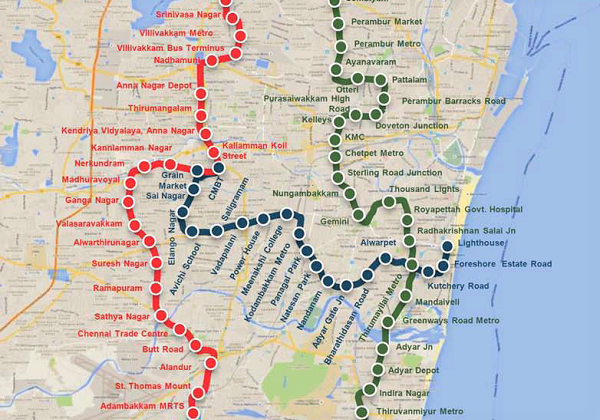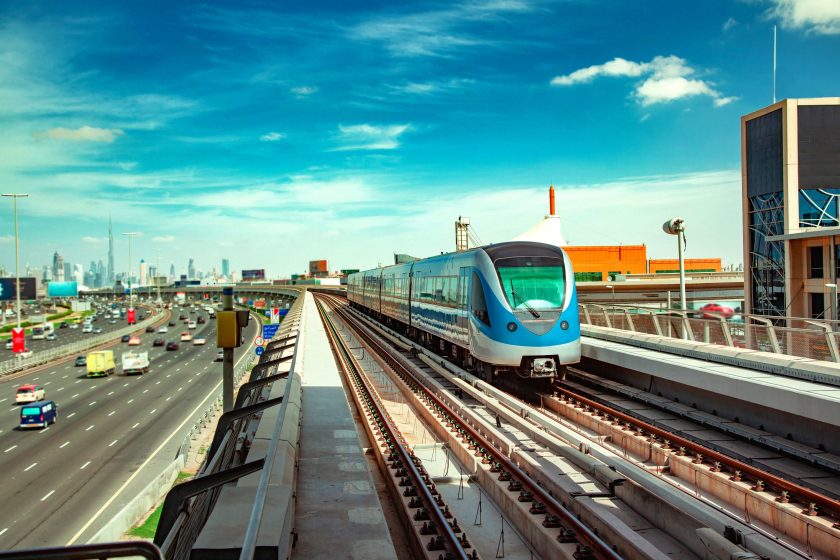Chennai Metro Rail plays a pivotal role in the landscape of the city, offering a more sustainable mode of transport. On June 29, 2015, the project’s first phase opened to the public, making it South India’s first operational metro. In addition to connecting key residential and business districts, the metro rail system was created to reduce traffic in the city.
Phase II of the metro project is aimed at expanding its reach and connectivity in the city. It’ll be easy for people to commute as a result of the ongoing massive expansion, including new corridors and extension lines. At this point, it is also significant to take into consideration that Chennai’s metro rail not only improved connectivity but also created a drastic impact on the real estate industry.

Chennai Metro Phase 2 Project Insights
The phase 2 expansion of the Chennai metro project encompasses three corridors: corridor 3 expanding from Madhavaram to SIPCOT; corridor 4 expanding from Light House to Poonamalle; and corridor 5 expanding from Madhavaram to Sholinganallur. The approximate distance covered by the Phase II metro would be 118 km. Each corridor of the Phase II project will cover various areas of the city via different routes.
· Madhavaram to SIPCOT; Corridor 3– This corridor will run from Siruseri SIPCOT to Madhavaram and is known as the Purple Line 3. It will cover a total of 48 stations, of which 19 will be elevated and 29 will be underground. Some of the key areas in this route are Perambur, Kilpauk Medical College, Chetpet, Nungambakkam, Royapettah, Adyar Junction, Perungudi, Sholinganallur, and Siruseri.
· Light House to Poonamalle; Corridor 4– This corridor will run from Lighthouse to Poonamalle Bypass and is known as the Orange Line 4. It will cover a total of 28 stations, of which 18 will be elevated and 10 will be underground. Some of the key areas on this route are Alwarpet, Nandanam, Kodambakkam, Vadapalani, Porur, and Valasaravakkam.
· Madhavaram to Sholinganallur; Corridor 5– This corridor will run from Madhavaram to Sholinganallur and is known as the Red Line 5. It will cover a total of 48 stations, of which 6 will be underground and 41 will be elevated. Some of the key areas in this route are Kolathur, Villivakkam, Anna Nagar, Koyambedu Market, Porur, Chennai Trade Centre, Medavakkam, and Elcot Park.
Advantages Of Metro Connectivity In Chennai
The development of Chennai metro connectivity will have various advantages. Some of the key highlights are:
· Eliminating Traffic Congestion– The metro rails will alleviate the traffic congestion on the roads, which will significantly reduce travel time.
· Better Accessibility– With the new metro lines, the accessibility to various residential and commercial areas in Chennai has been enhanced.
· Seamless Connectivity– It promotes smooth commuting to various parts of the city without any hassle. This allows people to travel conveniently and swiftly across the city.
· Sustainable Transportation– The metro rail promotes eco-friendly transportation as it will encourage people to shift from private transport to public transportation due to its easy accessibility.
· Real Estate Growth & Economic Development– The improved accessibility and connectivity will have a huge positive impact on real estate growth in the nearby localities. It will attract numerous investors, which will pave the way for economic development.
Metro-Related Real Estate Boom In Top Localities
The expansion of the Chennai Metro Rail played a vital role in enhancing the real estate sector in Chennai. There is a surmountable rise in properties and lands along the upcoming metro corridors of Chennai. Some of the top localities in Chennai have benefited from real estate due to the upcoming metro, and their property value increase in the past decade is listed,
· OMR – 33.6% increase
· Poonamallee– 19.9% increase
· Thoraipakkam– 19.6% increase
· Madhavaram– 36.2% increase
· Siruseri– 30.6% increase
· Pallikaranai– 32.4% increase
· Porur– 19.8% increase
Property Development by CMRL Alongside Phase II Stations
Apart from the real estate development that’s happening due to the upcoming phase II metro, CMRL has also proposed plans to develop properties along three primary metro locations: Thirumangalam, Thirumayilai, and Koyambedu. As per the proposed plan, a 12-storey building will be developed in Thirumangalam where the metro trains will halt and pass at the third-floor station. At Koyambedu and Thirumayilai, similar projects will be constructed.
CMRL has requested funds from the state government for these property developments. Former CMRL director R Ramanathan stated that even when trains are constantly full, ticket sales alone cannot cover operating expenses and debt repayment. The only ways to break even and increase revenue are to build and rent properties, allow retail stores at stations, and place advertisements.

